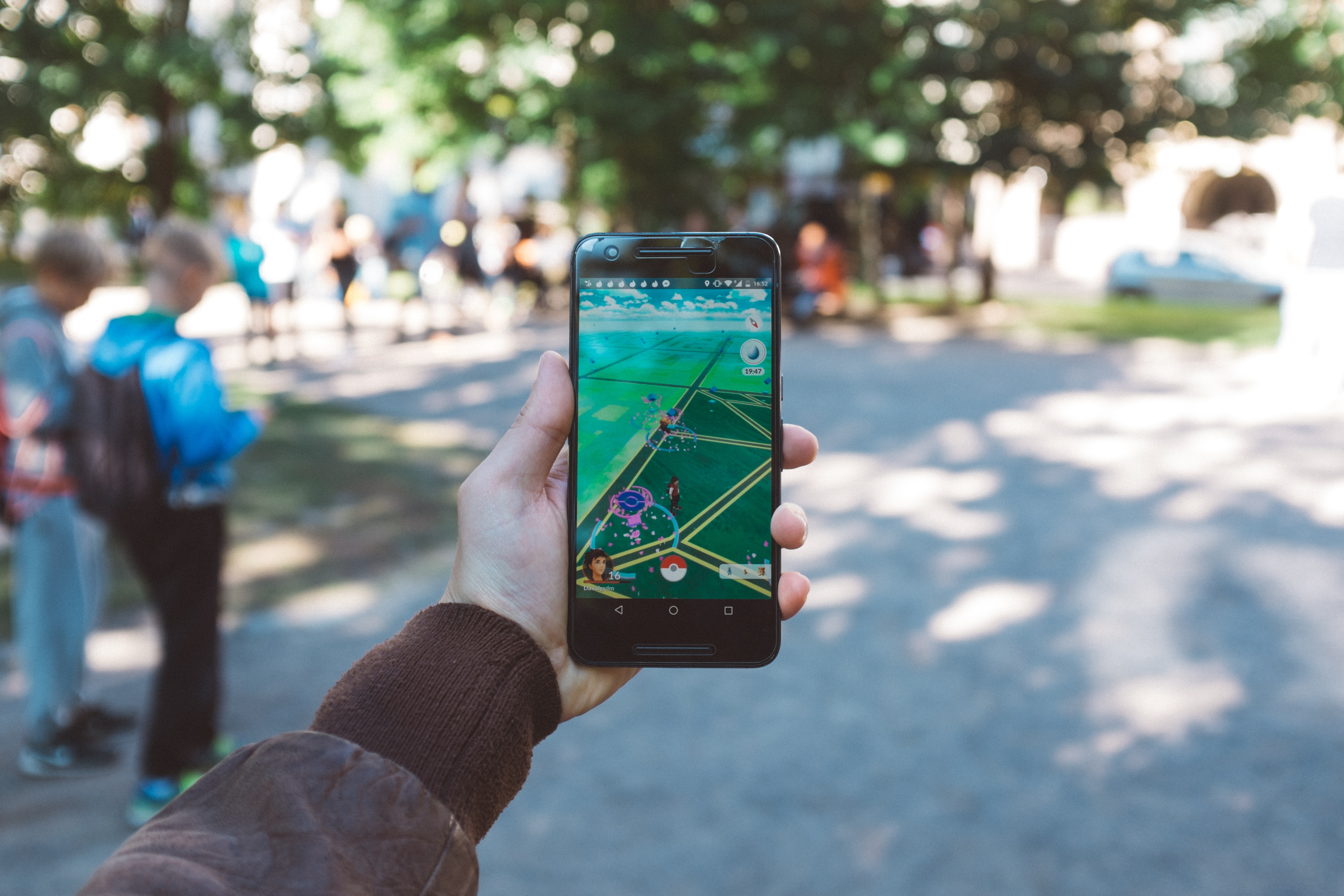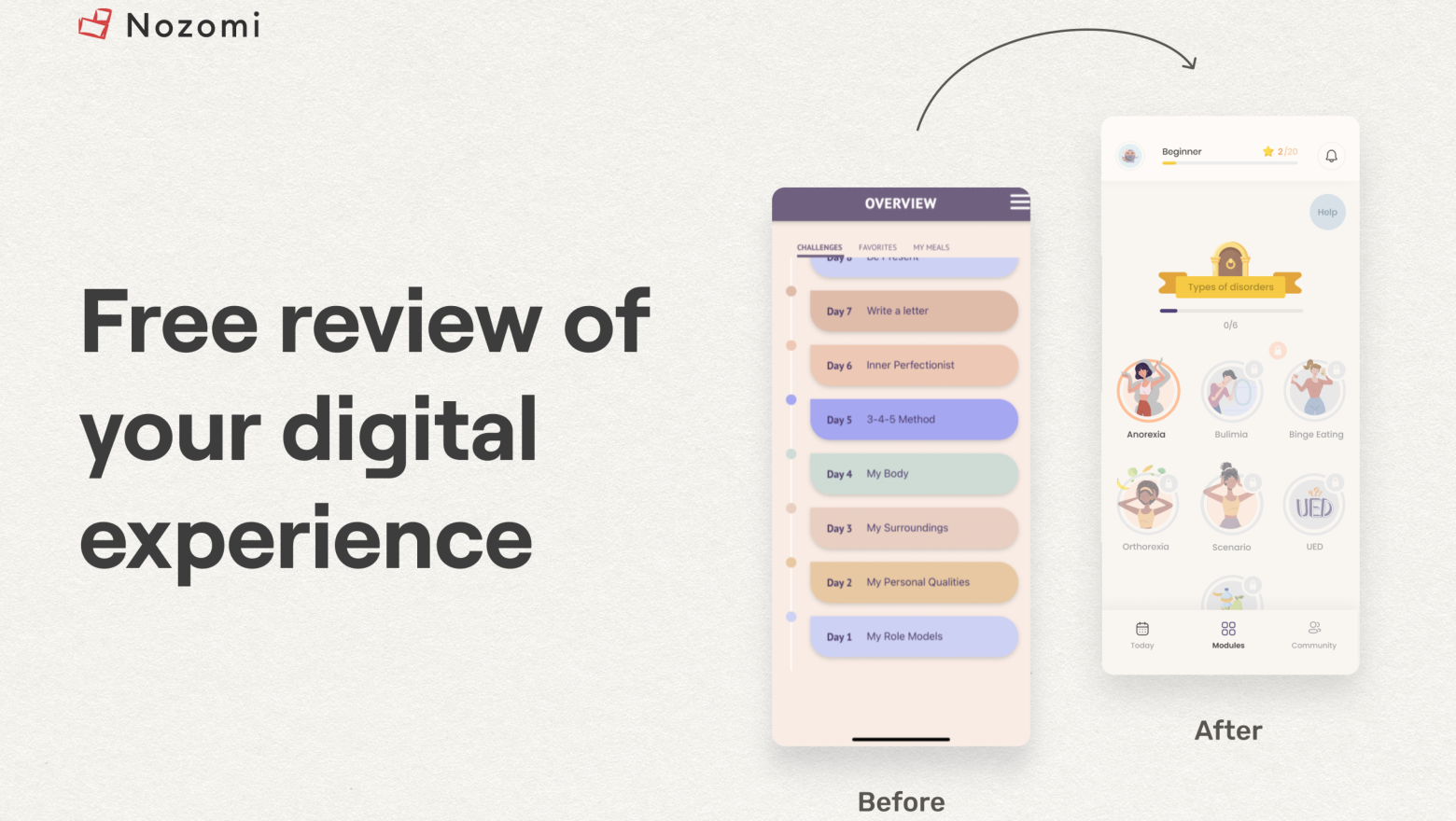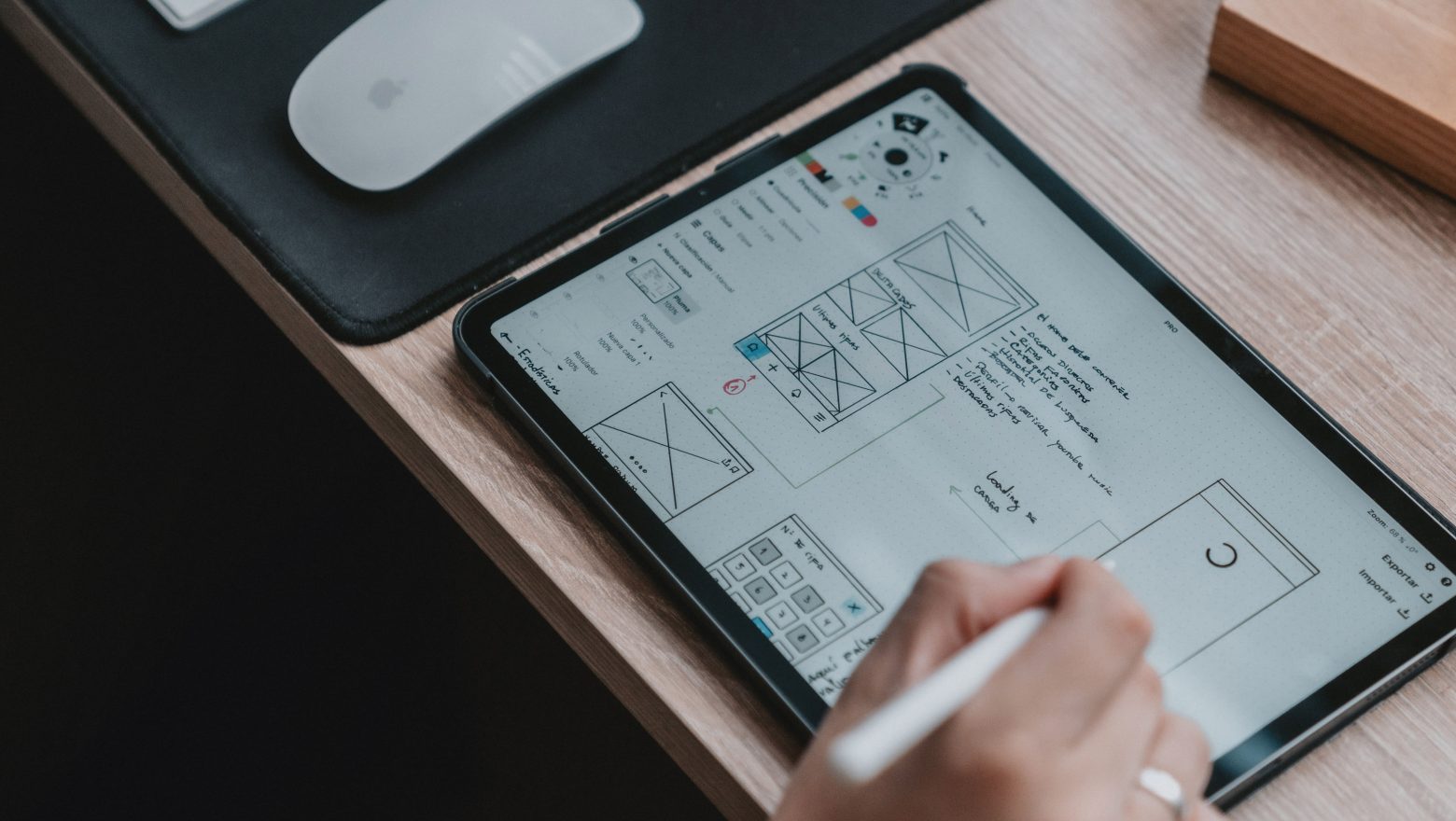According to Deloitte, gamification has been proven to have significant, positive effects on patients’ health by promoting adherence to treatment, fostering resilience, and increasing motivation to fight diseases. But how does gamification in healthcare do it?
Have you ever played video games, where you have to level up your character? Gamified health apps leverage similar mechanics to engage users and drive positive outcomes.
People get hooked on these games and spend hundreds or even thousands of hours playing them (just look at World of Warcraft, LoL, or Dota 2). And no matter what stereotypes say, these players are not “addicts” because they don’t play all the time. They choose specific games that align well with their habits.
For example, when we do a series of exercises or track our daily medication intake, we don’t see a green bar with “+500 experience” and a progress scale like in games. In gamification in health, these elements are intentionally implemented to make routine tasks more engaging and rewarding.
In games, such elements exist, and their creators know exactly which triggers to use so that players feel less pressure when performing actions, reinforced by positive and negative motivations. This psychology is now being applied to digital health gamification, helping users develop positive habits and overcome inertia.
That’s why many Health startups now adopt gaming experiences and implement their approaches into real-life applications. And users don’t feel like they are forced to do something again; instead, their actions become meaningful.
So, what benefits of gamification in healthcare apps are used?
By creating good storytelling in the app and setting up proper User Journeys and triggers, people will:
1. Receive positive motivation (in essence, they even solve an existential problem — understanding the meaning behind their actions):
– see all their progress and receive vivid messages with achievements like “+500 experience”;
– understand the plan for their health development instead of keeping a list of exercises in their heads.
2. Receive negative motivation: worry if they lose levels/progress. For instance, if they miss a series of workouts or medication.
These two aspects are what make users engage and retain in gamified health apps. After all, user experience is an adventure rather than a regular routine.
So, how to use gamification in health apps? Recently, we thought about explaining in detail the three elements of gamification that drive Adoption, Engagement, Retention & Patient/User Outcomes.
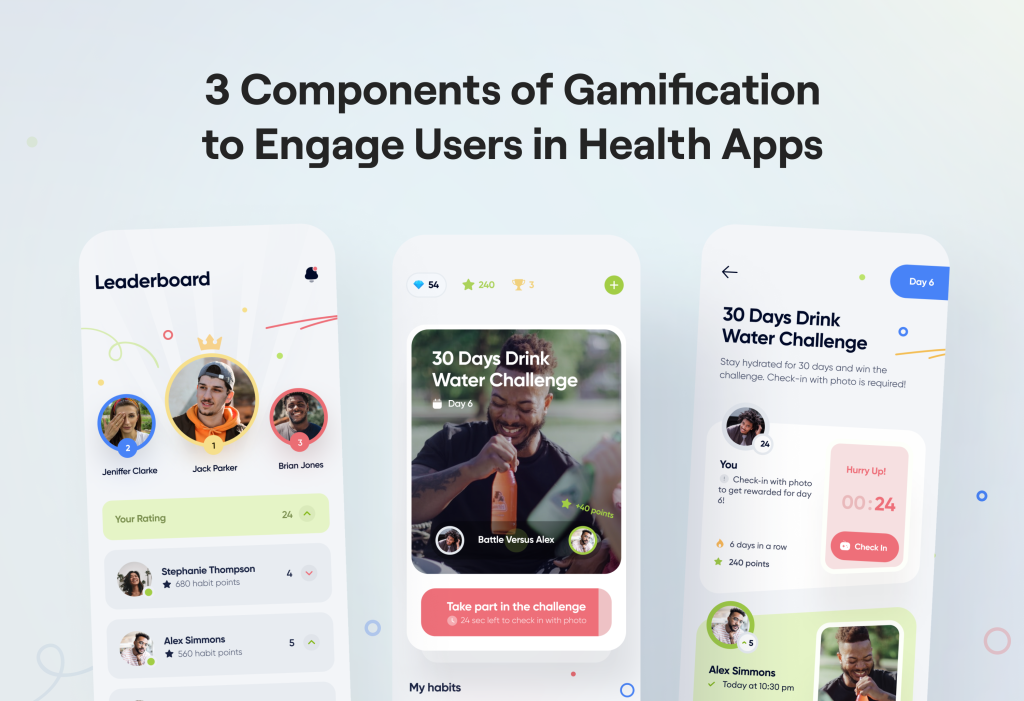
I. Educate
The first thing we need to do is explain to the user how the app works and how to perform, for example, exercises. Even here, gamification can help solve such a task. What is one of the important benefits of gamification in healthcare apps?
Storytelling Tutorials & Memorable Images
1. Getting to know the app (App Tutorial): the best approach for introduction is to tell the user about the features of the application (and where to find them!) through a story. This method reduces cognitive load for the user, and vivid images aid in better memorization of the information.
Therefore, it is better to do this using a mascot:
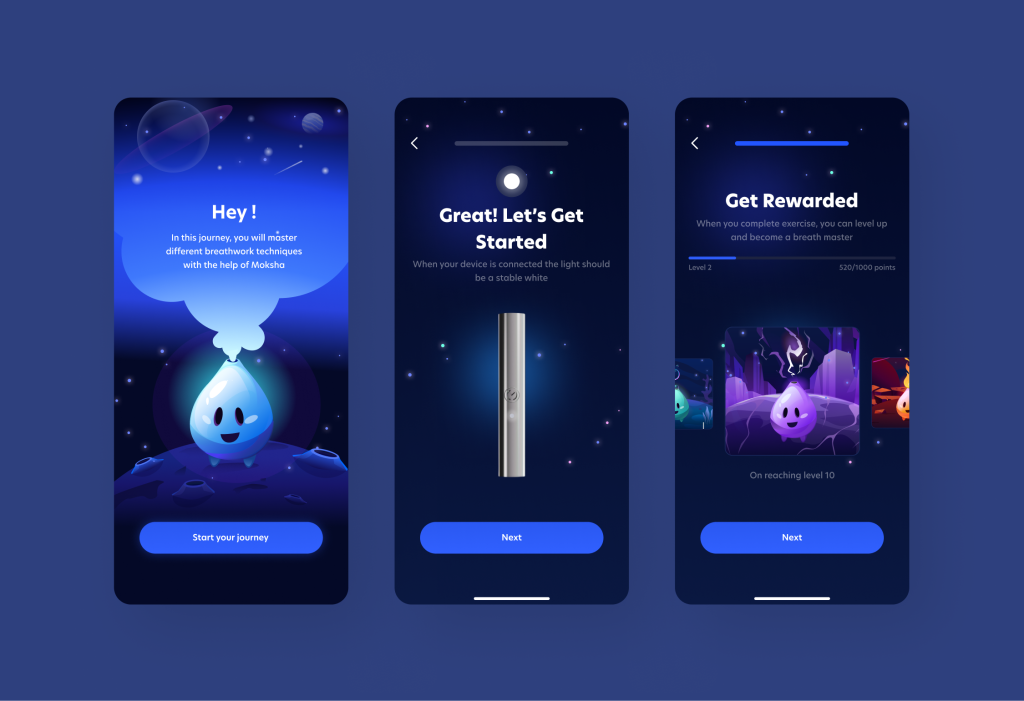
Learn more about Moksha case here
If you have many small interface elements, using on-screen tooltips for such cases can be beneficial, just like here:
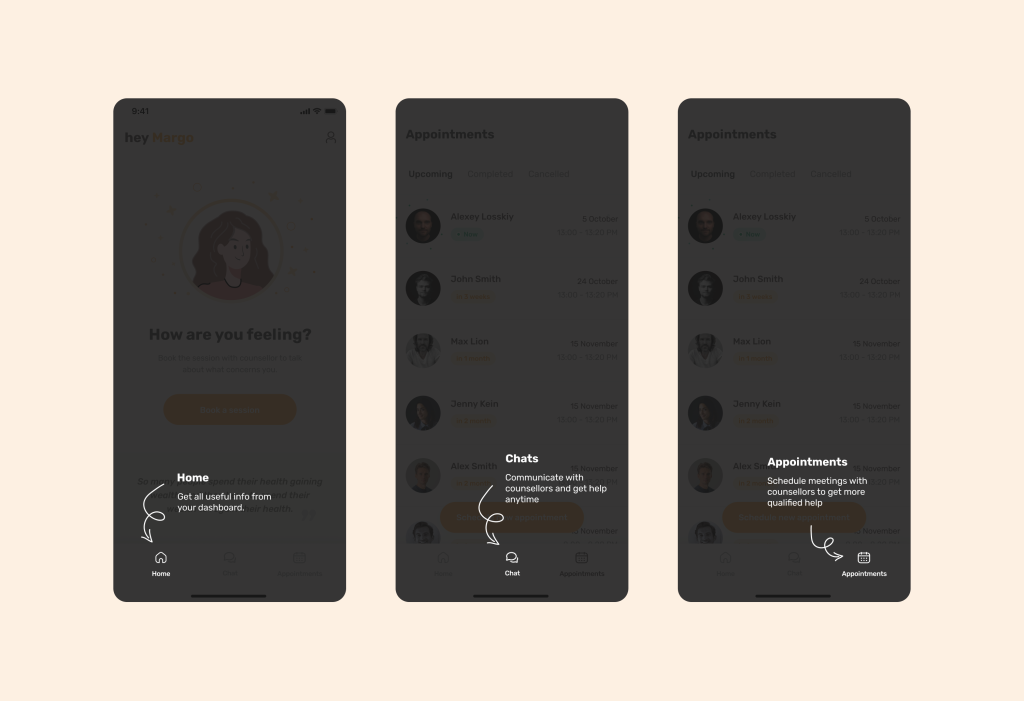
Above we showed our example with Allbry, where we used the backlight and arrows that introduced the user to the application interface. Thus, the onboarding process will go more smoothly and the % of users leaving the application will be significantly less.
2. Health Education: but introducing the app is not the only task of Education. Despite being listed first, there will be moments where users will need to revisit it.
For instance, when receiving a new set of exercises after a few months, the user will need explanations on how to perform them again:
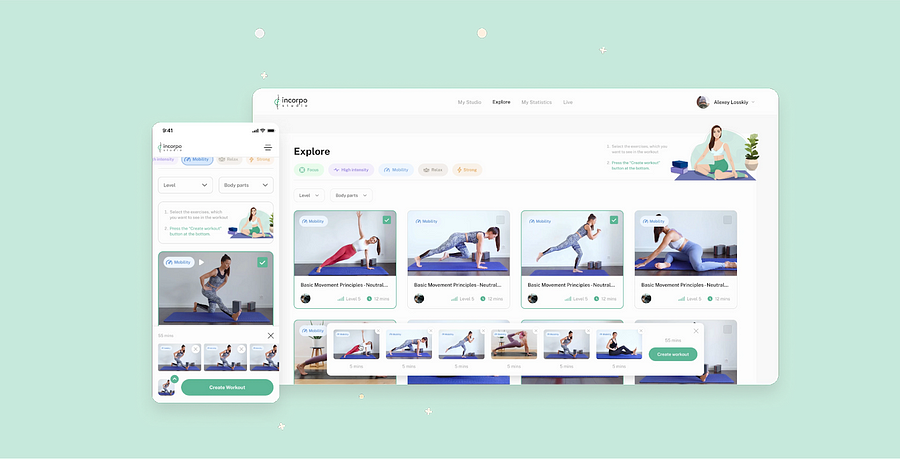
Or, for example, when setting a new fitness goal, the mascot can remind them that they can always modify them later (and we use mascot again):
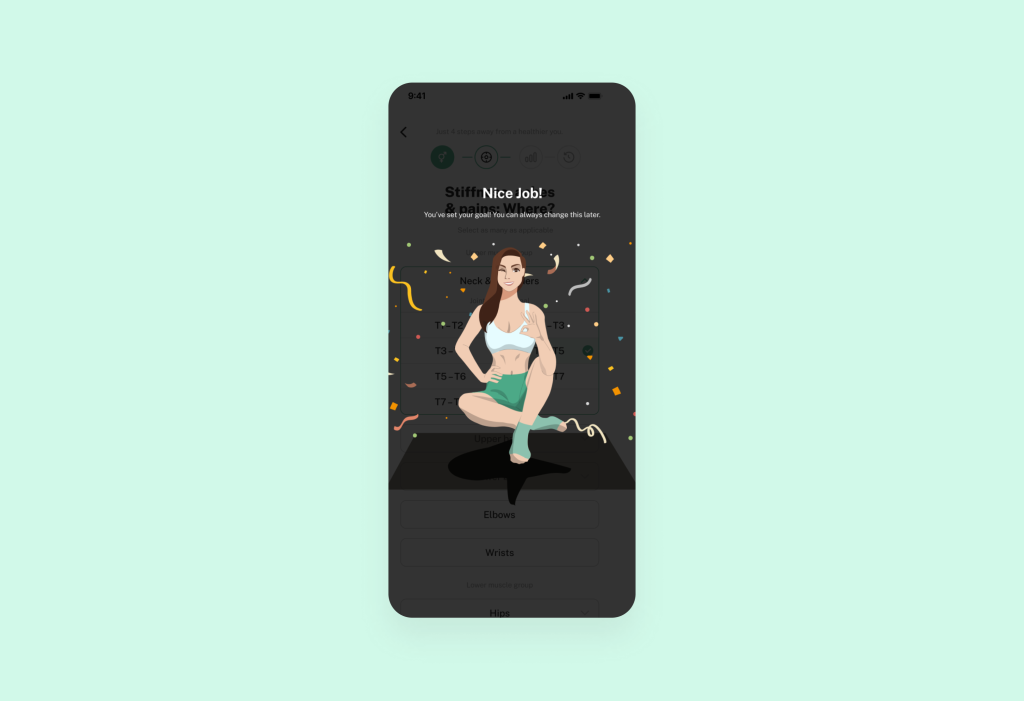
Learn how we’ve built health platform for physical wellbeing
Indeed, such details should also be taken into account using gamification in healthcare apps because users vary, and they might not always figure out on their own that something can be updated or changed.
Thus, we introduced the user to our application and how it works. Now the user won’t get confused. But we need to motivate them somehow!
II. Motivate
The user already understands how the application works thanks to the “Educate” stage. Now our task is to get them moving forward and overcome any inertia. How will we achieve this?
1. Social Elements: Avatars, Achievements & Leaderboards
The next example of gamification in health apps: in ProgressMe (an app that helps people with eating disorders) we used game elements and mechanics to create a more interactive and engaging user experience. This includes reward systems, achievements, leaderboards & rankings.
For example, in the image below, we provided the user with the opportunity to create their own avatar, creating a sense of ownership (improving the character = improving oneself). At the same time, we create motivation through a system of rewards and achievements that users can earn, for instance, by creating topics and providing answers in the community.
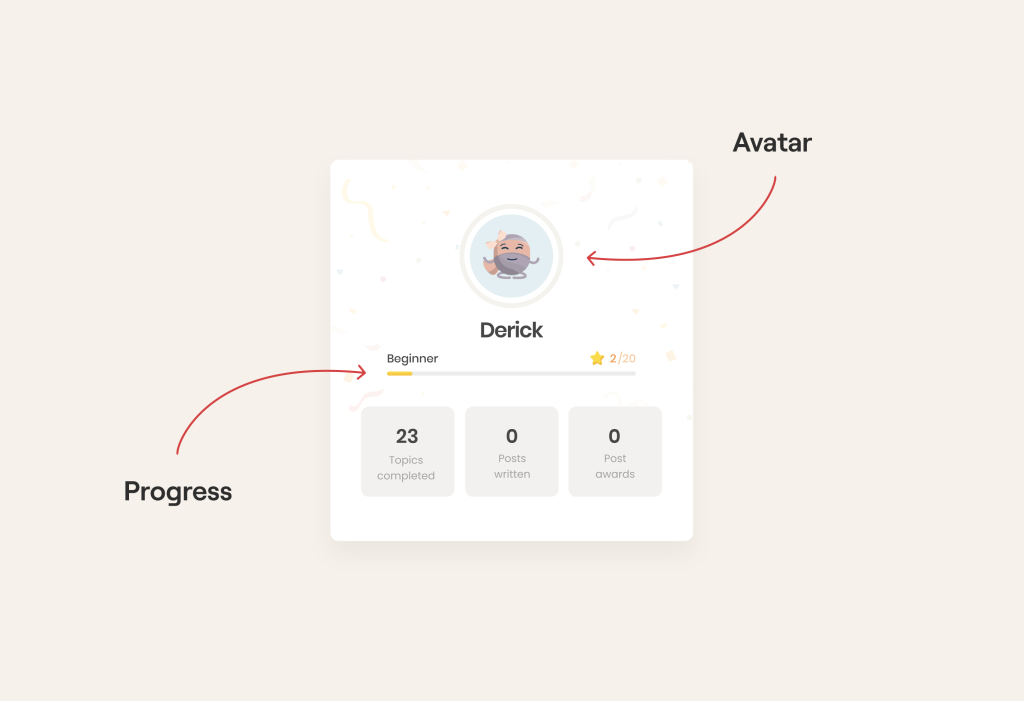
Learn how we’ve built platform for eating disorder treatment
Thus, we increase User Engagement by allowing them to create their avatars and fostering a sense of ownership. At the same time, through their content contributions (users creating topics, not us), other users are more likely to return to the app, which enhances overall Retention.
Let’s take a closer look at the reward system in the image below:
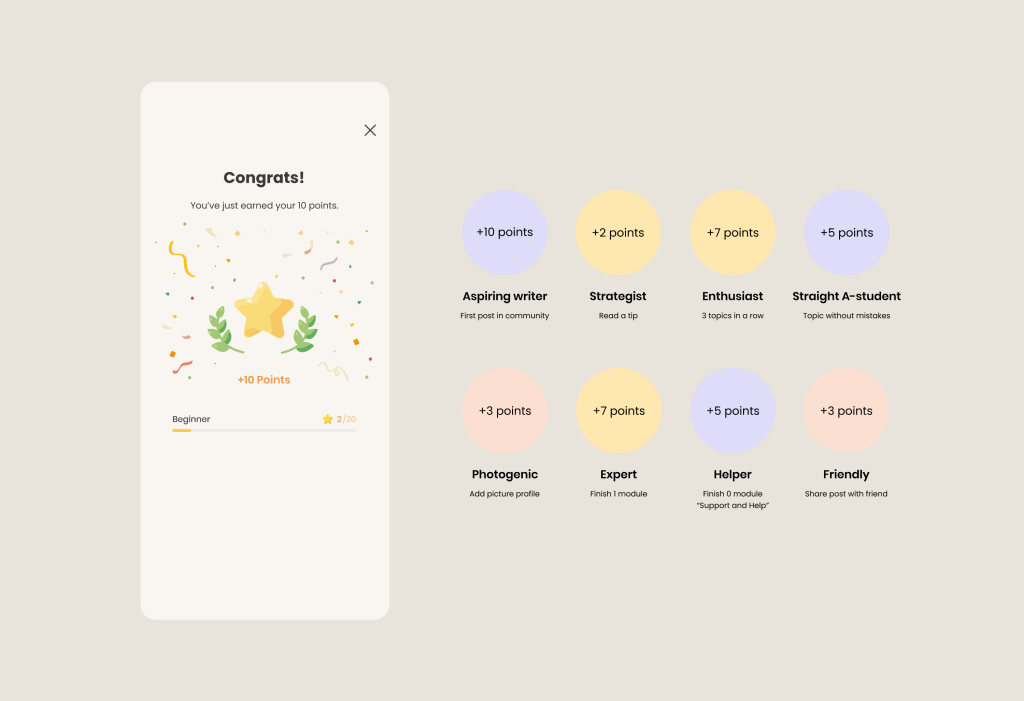
Here we have added a complex system that rewards the user for increasing their own progress. You may have heard that computer game lovers very often replay games just to get an “achievement”.
And the trick here is that in order to increase this very progress and get an “achievement”, you need to go into the product more often. Therefore, we repeat once again that this is a Must Have for increasing the Retention rate and related indicators that affect revenue (LTV, ARPPU, etc.)
How does it work, in more detail? What ways can such gamification be used in the healthcare industry?
The application provides the user with certain information, a task, a questionnaire, etc. However, in order for the user to spend his time on your application, they need to be encouraged.
Yes, if you provide the user with quality information, this in itself encourages them to use your product. But nowadays, users have become more choosy and our task is to give them new emotions and stand out from other competitors.
Having received the necessary information from the user, we thank the user for the time spent and choosing our product.
And HOW we thank them is most important: we load them with a number of awards, which are backed up by attractive animations/images. Thanks to this, the user receives a microdose of endorphins in the body and the realization that we value their time.
So, what tasks and quests can exist?
2. Tasks, Quests & Questionnaires
Let’s come back to the example of ProgessMe. Many gamification elements are intertwined, making it challenging to examine them separately. Therefore, we will talk about the relationship of tasks /quests/questionnaires and storytelling with progress.
About questionnaires: one of the simplest ways to engage users is to conduct surveys.
Surveys have various purposes, such as assessing health levels, identifying health issues based on symptoms, or testing knowledge on a specific topic. In such cases, we shouldn’t forget to reward users with the same “+500 experience” for completing the test because it requires real effort and motivation to do so.
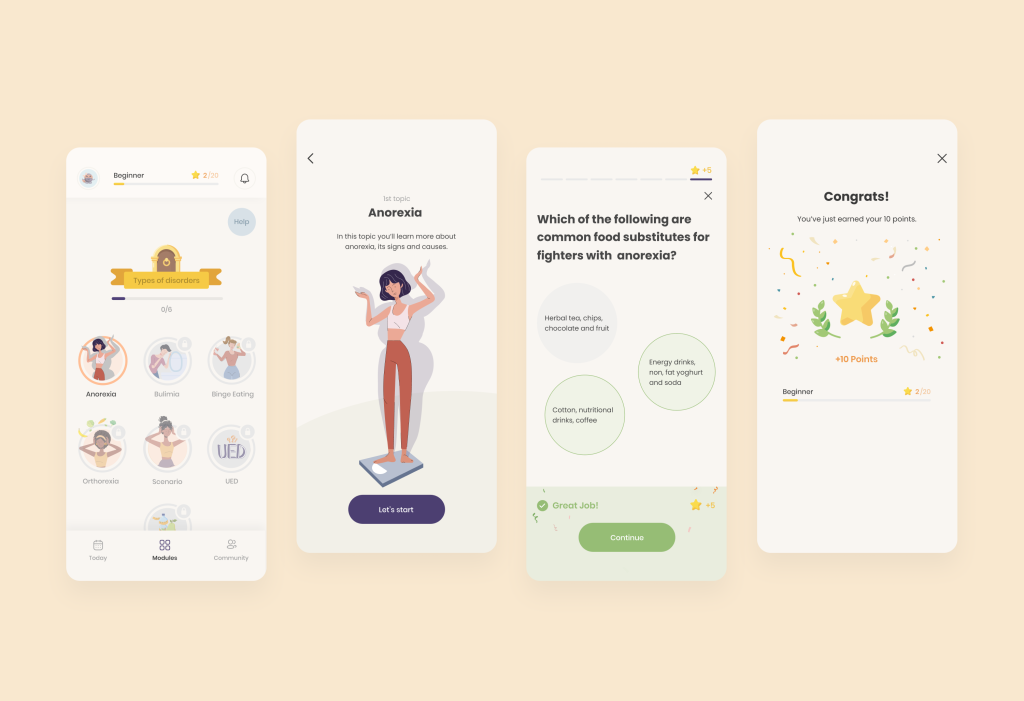
In the picture above, we showed what such a gamified process looks like: choose a problem and memorize its description & symptoms -> take the test -> “Wow, you’re smart, here’s the experience!”
Moreover, for each completed test, there is also progress accumulation, showing how many out of how many tasks are done. In addition to that, the rank is displayed above (in the picture below, it’s “Beginner”).
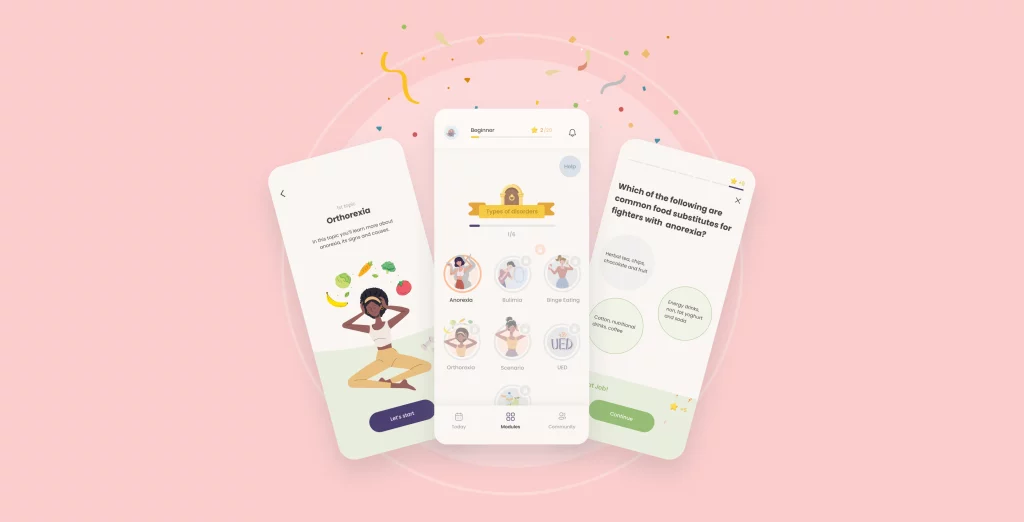
For tasks & quests let’s showcase an example from our company’s internal application:
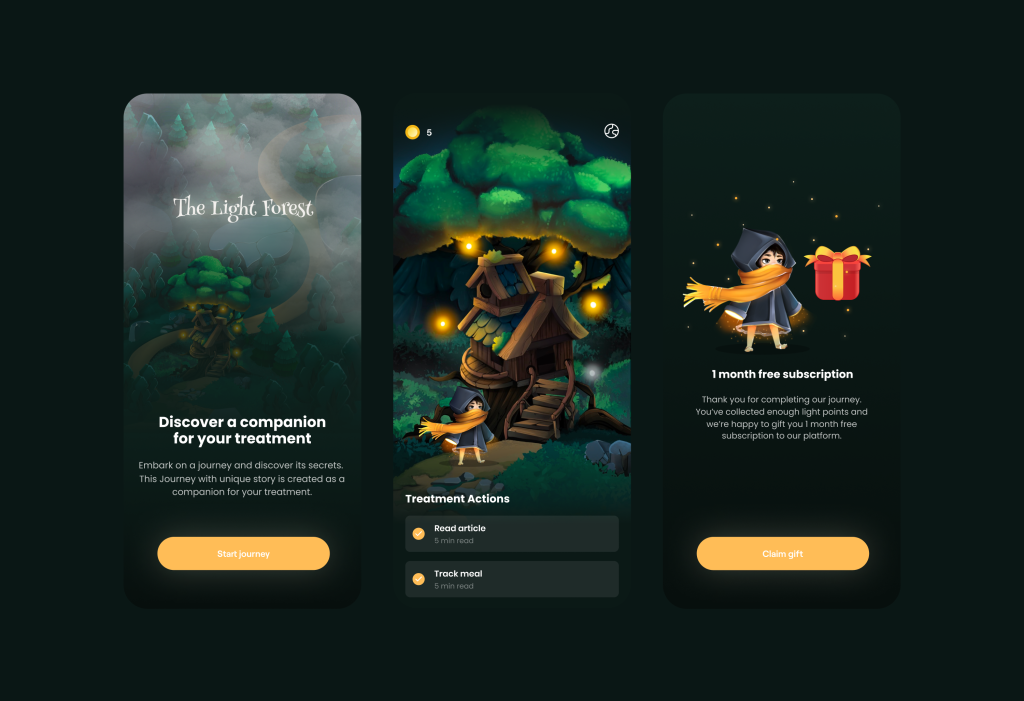
In our internal project (disease management app that is still under development 🙂) instead of an ordinary treatment plan, we engage patients in their treatment through a compelling story.
The process is simple: instead of just following a treatment plan, patients embark on a mini-quest based on an engaging story and complete tasks outlined in their treatment plan.
These tasks include educational materials and serve as reminders for taking medication. They address the problem of managing illnesses, as it needs to be done daily, and many people simply forget (resulting in poor retention and adoption).
So, we create the motivation using gamification in healthcare apps, and now we need to cement the user’s desire to enter the app as if it were a daily ritual like brushing teeth.
III. Create a Habit
1. Progress & Level
Remember the example with video games at the beginning of the article? Why don’t people want to quit playing? And how to create such gamification in health apps?
It’s because they already have a significant accumulated progress that they simply don’t want to let go of. They have invested a lot of time into it, they genuinely see all the efforts that have been put into reaching a high level/rank, and they can even compare it with other users (which undoubtedly fills them with pride).
In the “Educate” stage, we already mentioned progress elements. In the image below, there is an example of the “Beginner” stage and the next module that needs to be completed to progress and achieve the next level.
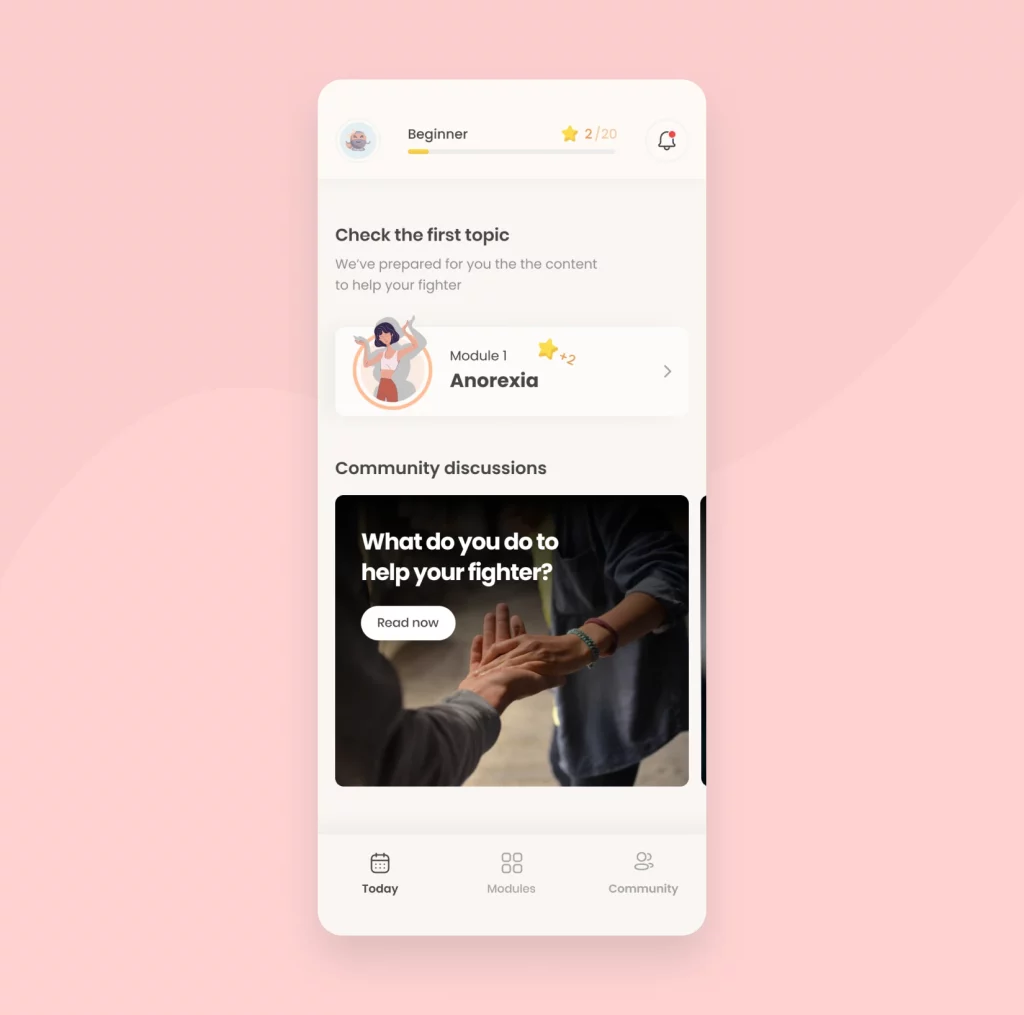
In addition, in the app’s interface, we have included the “Community Discussions” section, as participation in discussions also influences the progress, although it is considered secondary for the user.
In other words, as the user levels up in the app, they are also leveling up themselves in real life. Completing the modules that contribute to progress actually enhances the user’s real knowledge about their specific eating disorder (description, symptoms, treatment).
By the way, we can also provide an example from a completely different industry: Habitica. It’s an app that gamifies task completion in the style of MMORPG quests, granting levels, armor, and weapons for their completion. Some members of our team use it to record fitness and other activities as well. And use this approach we can gamify health apps.
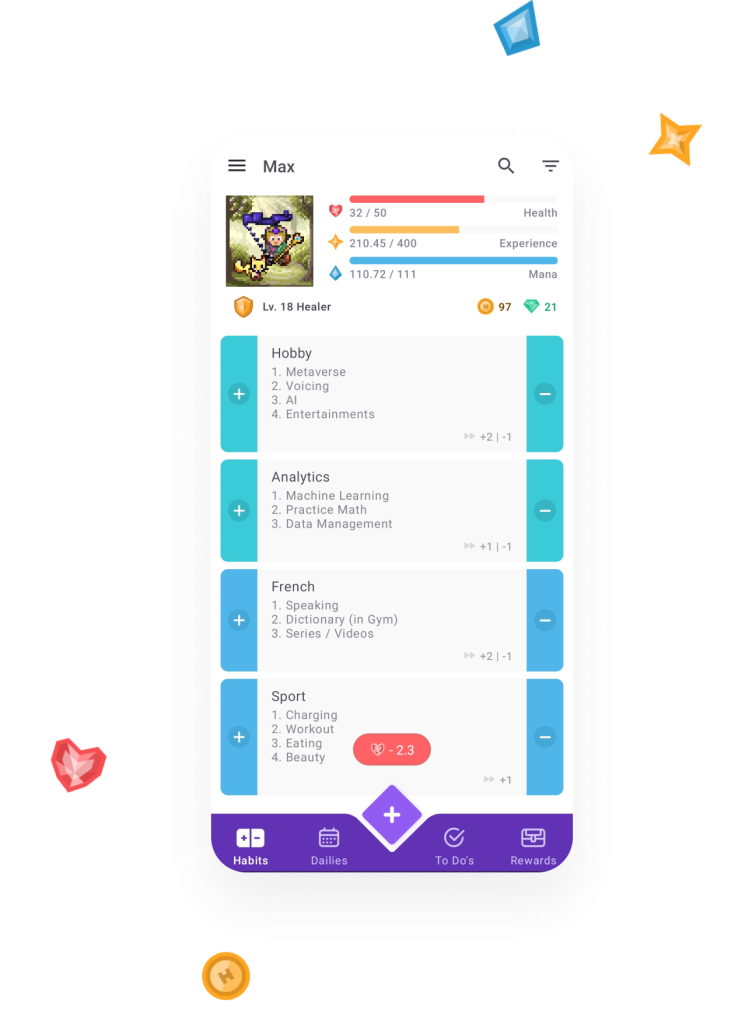
And in fact, there, negative motivation is at work: if the user fails to complete a quest, their level and health are lost.
Now let’s move on to the last two mechanics.
2. Notifications & Events
In conclusion, besides retaining users through accumulated progress, we should also use notifications and events.
Notifications can be related to:
1. Missing a session/exercise/medication intake.
2. App updates.
3. Receiving rewards.
4. New events.
5. Responses/reactions to a user’s social activity.
6. Long periods of inactivity in the app.
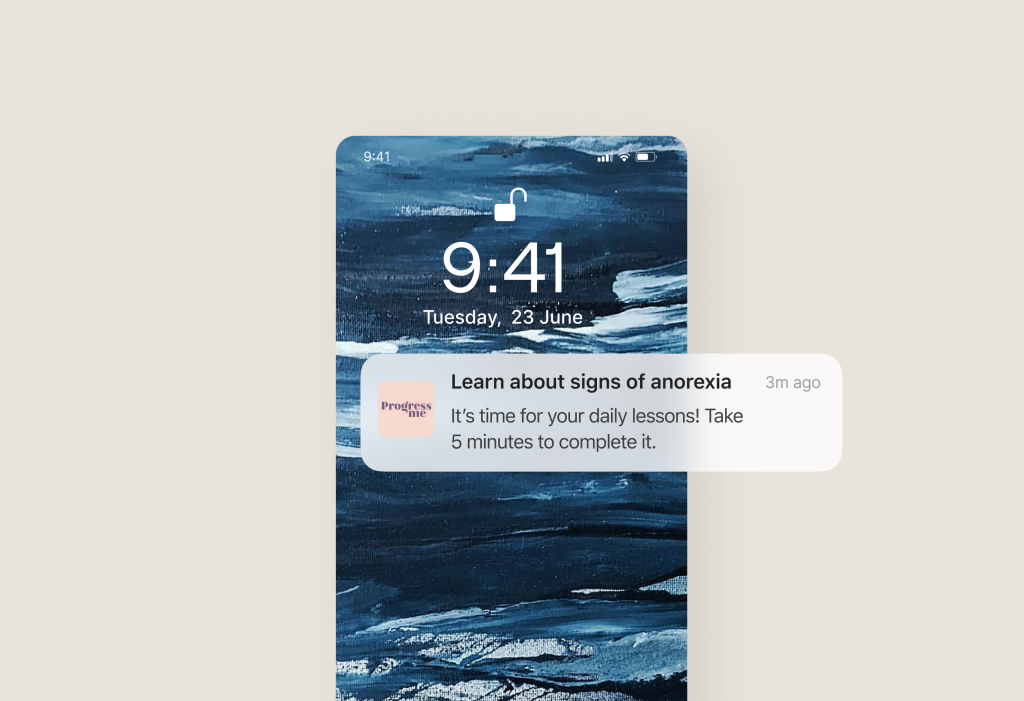
In the image above, the app reminds the user about the daily lesson because they forgot that they needed to complete it today.
New Events are created by users or app creators and are usually related to some real-life event or the changing of seasons. For example, we can receive unique rewards or simply wish to be involved in a challenge (it’s really crucial way to gamify the health app):
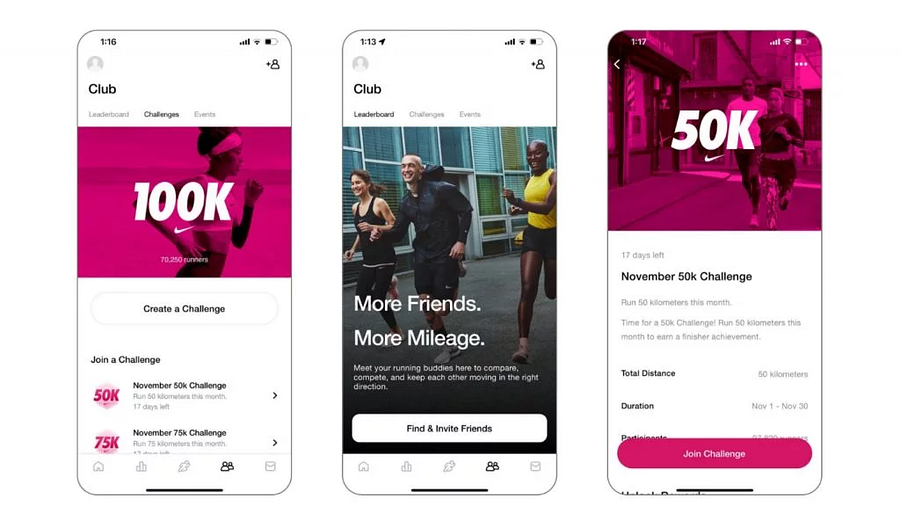
Source: Nike Training Club
Conclusion
As we can see, these three points — educate, motivate, and instill a habit — should be present in any ideal gamification approach. However, the specific tools used within these points depend on your target audience and the problems they face. How to understand what users want?
We have written a separate article about identifying hidden user problems with research methods Here
Additionally, pay attention to the statistics: Gartner predicts that 80% of gamified applications will fail to meet business objectives, primarily due to poor design.
Therefore, without knowledge of UX (especially behavior patterns of various user types in Health niches), UI, and the right development process focused on the desires of a specific target audience, there is a high risk that the described gamification elements simply won’t work.
——————————————————————————————————————————-
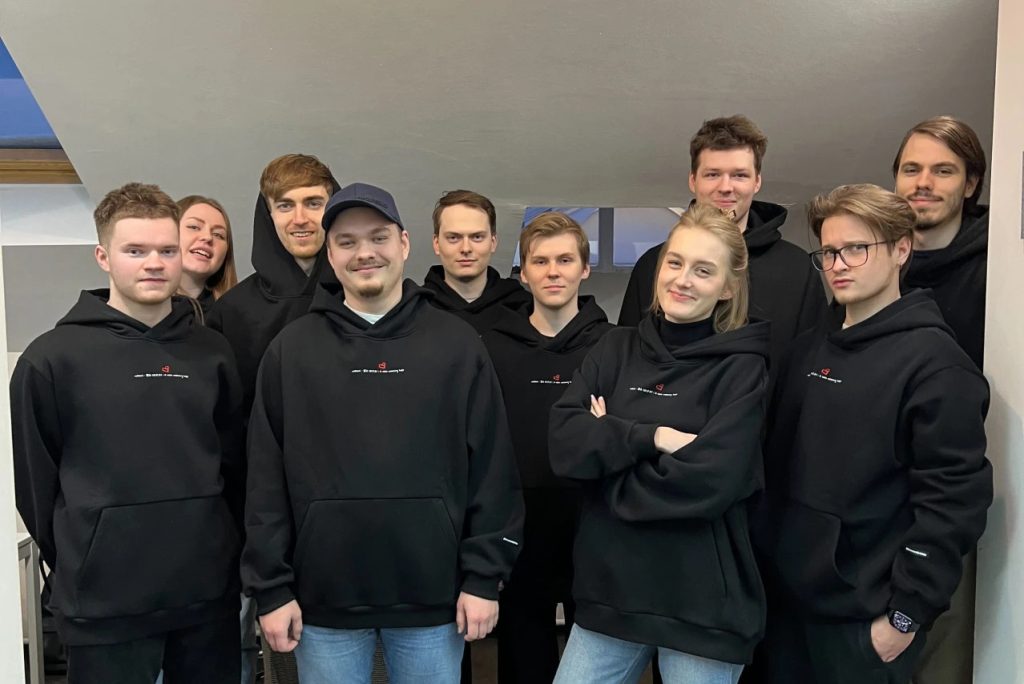
We hope our article was useful for you!
Who we are? We are a Digital Health Product Studio, who transforms healthcare digital experiences and sets new standards for delivering digital healthcare in a way that positively impacts people’s lives.
We assist healthcare startups in designing and developing digital products, while also helping healthcare organizations undergo transformative changes.
If you are interested about our experience check our case studies by the link or check a book about our approach.
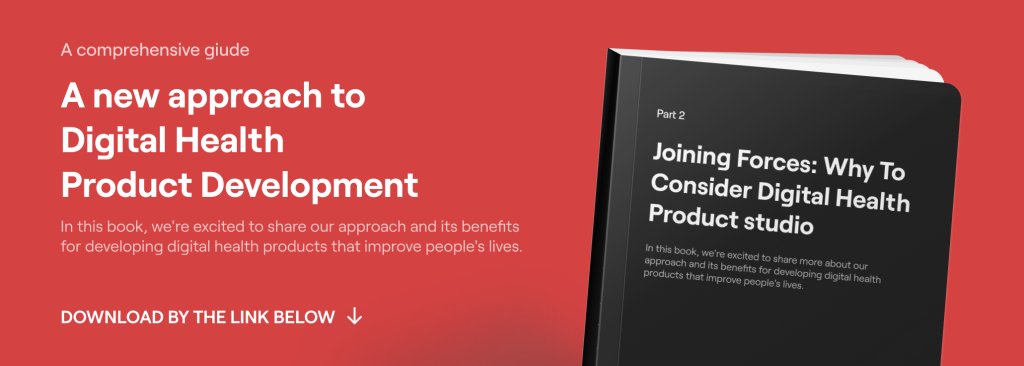
Learn how we work with Digital Health companies to create impactful products
Or write to us now on m@nozomihealth.com and we will discuss how we can help ensure that your product brings real benefits


